This set of Air Pollution Control Multiple Choice Questions & Answers (MCQs) focuses on “Plume Behaviour and Characteristics – Set 2”.
1. Which of the following illustrations represents fumigation?
a)
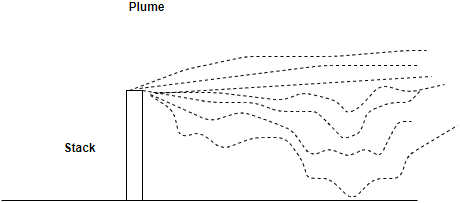
b)
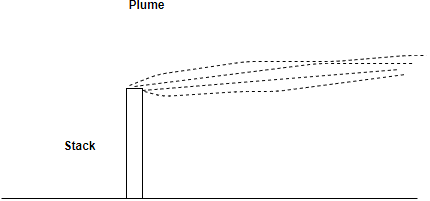
c)
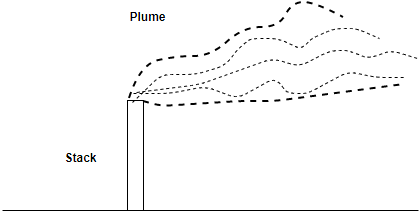
d)
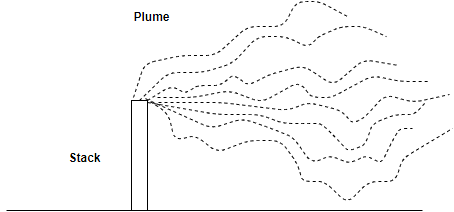
View Answer
Explanation: The following diagram represents the fumigation.

In the case of fumigation, the atmosphere forms two distinct layers. The air a short distance above the stack is stable, but it is unstable below the stack. This condition causes the plume to move towards the surface.
2. For which of the following types of plume behaviour does the atmosphere not exhibit different stability layers?
a) Fumigation
b) Looping
c) Lofting
d) Trapping
View Answer
Explanation: The odd one out in the given options is looping. This is because, in this condition, the atmosphere forms one stable layer. In the case of fumigation, lofting, and trapping, there are stable as well as unstable layers of the atmosphere, which prohibit the plume from moving in certain directions.
3. In the case of fumigation, in which direction does the plume flow?
a) Sideways
b) Upwards
c) Downwards
d) Exactly like lofting
View Answer
Explanation: In the case of fumigation, the plume moves downward. There exists an inversion layer above the stack, so the plume cannot flow upwards. Its movement is exactly the opposite of lofting.
4. Which of the following plume behaviour conditions lasts for a very short period (less than an hour)?
a) Looping
b) Coning
c) Trapping
d) Fumigation
View Answer
Explanation: Among the given options, only fumigation lasts for short periods. Even though the plume moves towards the ground, which is harmful, it does not last for very long. The inversion layer dissipates after some time.
5. The illustrated graph represents which kind of plume behaviour?
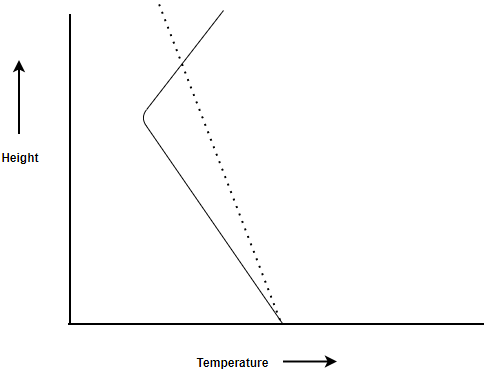
a) Fumigation
b) Lofting
c) Coning
d) Looping
View Answer
Explanation: The graph represents the fumigation condition. There exists an inversion layer (just above the stack), which makes the atmosphere stable. This state pushes the plume downwards, where the atmosphere is unstable.
6. Which of the following plots indicates the lofting condition?
a)

b)
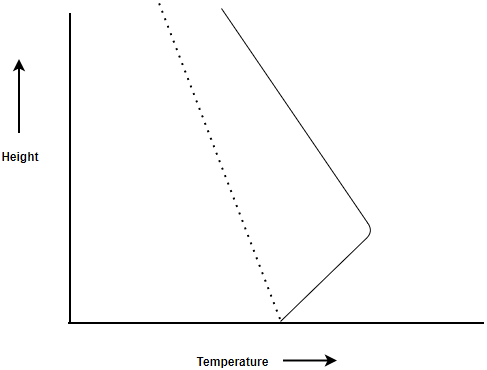
c)
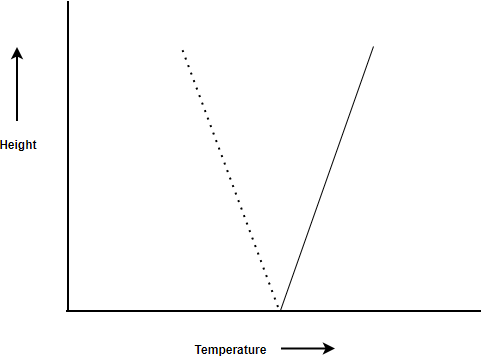
d)
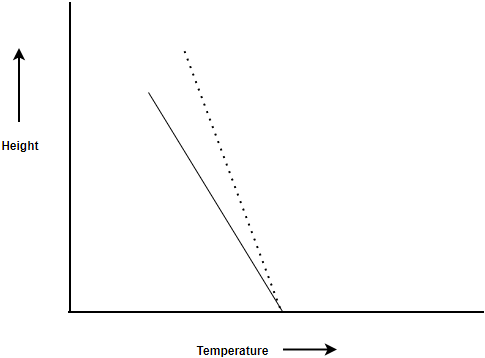
View Answer
Explanation: This plot indicates the lofting plume.

The inversion (solid line touching the x-axis) ends below the stack, so the plume does not move downwards. The plume, then, gets dispersed upwards where the atmosphere is unstable (inverted solid line).
7. Which of the following plume behaviours is exactly the opposite to that of lofting?
a) Fanning
b) Coning
c) Fumigation
d) Lofting
View Answer
Explanation: Fumigation and lofting are opposite conditions. In fumigation, the inversion is above the stack, while in looping, the inversion is below. In the former, the plume moves downwards, and in the latter, the plume moves upwards.
8. Which diagram indicates the lofting plume?
a)

b)

c)
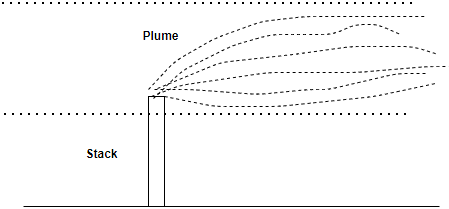
d)

View Answer
Explanation: This diagram indicates the lofted plume.

In this case, the inversion is below the stack, so the atmosphere is stable here. The plume moves upwards, which is very favourable. Lofted plume occurs when conditions are unstable in an inversion layer.
9. Which is the most favourable plume behaviour to avoid ground-level pollution?
a) Looping
b) Coning
c) Fumigation
d) Lofting
View Answer
Explanation: In all the given options, except for lofting, the plume reaches the surface of the earth. This result does not fulfil the goal of avoiding ground-level pollution. In lofting plume, the inversion layer below the stack makes it difficult for the plume to reach the ground.
10. The condition of inversion below the stack exists for which of the following plume behaviours?
a) Lofting and fumigation
b) Lofting and trapping
c) Trapping and fumigation
d) Coning and Looping
View Answer
Explanation: For both lofting and trapping, there exists a condition of inversion below the stacks. The inversion exists above the stack for fumigation. There is no inversion when it comes to looping and coning.
11. Which kind of plume behaviour is indicated by the given diagram?

a) Fanning
b) Lofting
c) Trapping
d) Coning
View Answer
Explanation: Trapping is illustrated here. The dotted lines above and below the plume show the beginning and end of the inversion layers, respectively. The plume gets “trapped” between the two inversion layers.
12. Which of the following is the graph of the trapped plume?
a)
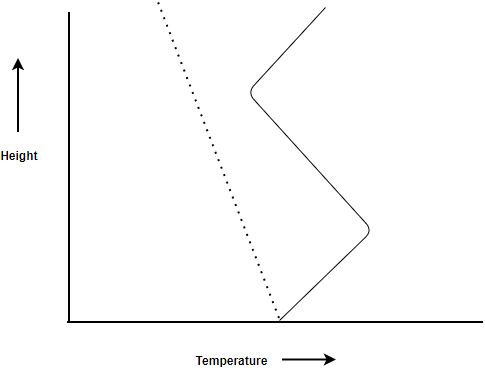
b)
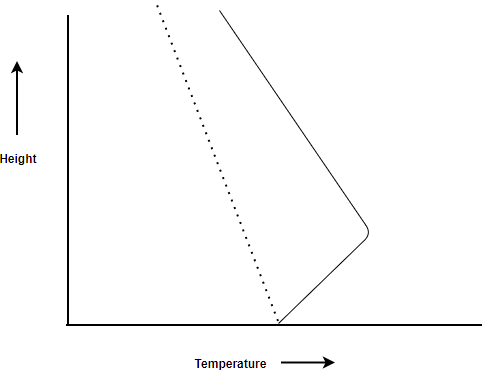
c)
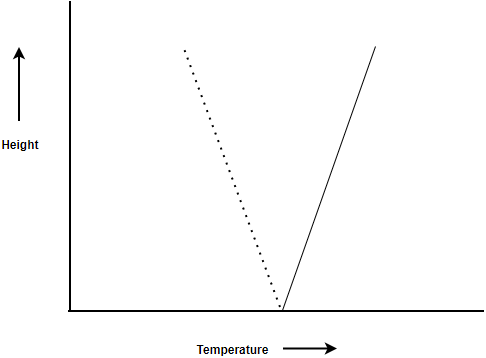
d)
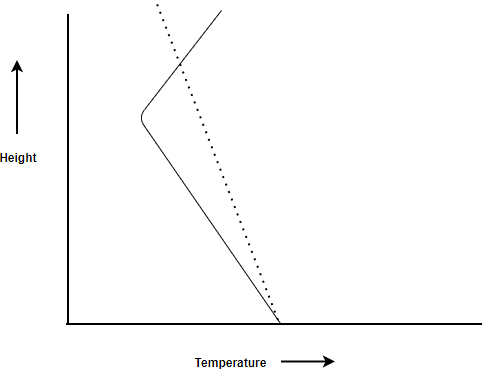
View Answer
Explanation: For a trapped plume, there exist two inversion conditions: above and below the stack. This forces the plume to disperse in the unstable region between the two stable inversion conditions. Therefore, the plot of this plume behaviour is:

13. When is the trapped plume most likely to occur?
a) Radiational inversion
b) Subsidence inversion
c) Advective inversion
d) Subadiabatic inversion
View Answer
Explanation: Two inversions trap the plume in the unstable region between them. This condition is most likely to occur during subsidence inversions, where there are two inversions also.
14. Which of the following plume dispersions create the worst pollution circumstances?
a) Fanning
b) Coning
c) Trapping
d) Fumigation
View Answer
Explanation: The trapped plume is the most problematic of the listed plumes. The inversion layers below and above the stack, trap the pollutants in the unstable region between them. These inversion layers may persist for days, so the air pollutants may not be able to disperse.
15. In which of the listed plume behaviours, does the plume get stuck between two inversion layers?
a) Lofting
b) Fumigation
c) Fanning
d) Trapping
View Answer
Explanation: The trapped plume, also known as trapping is the right answer. The plume gets trapped between the two inversion layers, hence the name. There is an unstable atmosphere layer between the two stable inversion layers.
Sanfoundry Global Education & Learning Series – Air Pollution Control.
To practice all areas of Air Pollution Control, here is complete set of 1000+ Multiple Choice Questions and Answers.
If you find a mistake in question / option / answer, kindly take a screenshot and email to [email protected]
